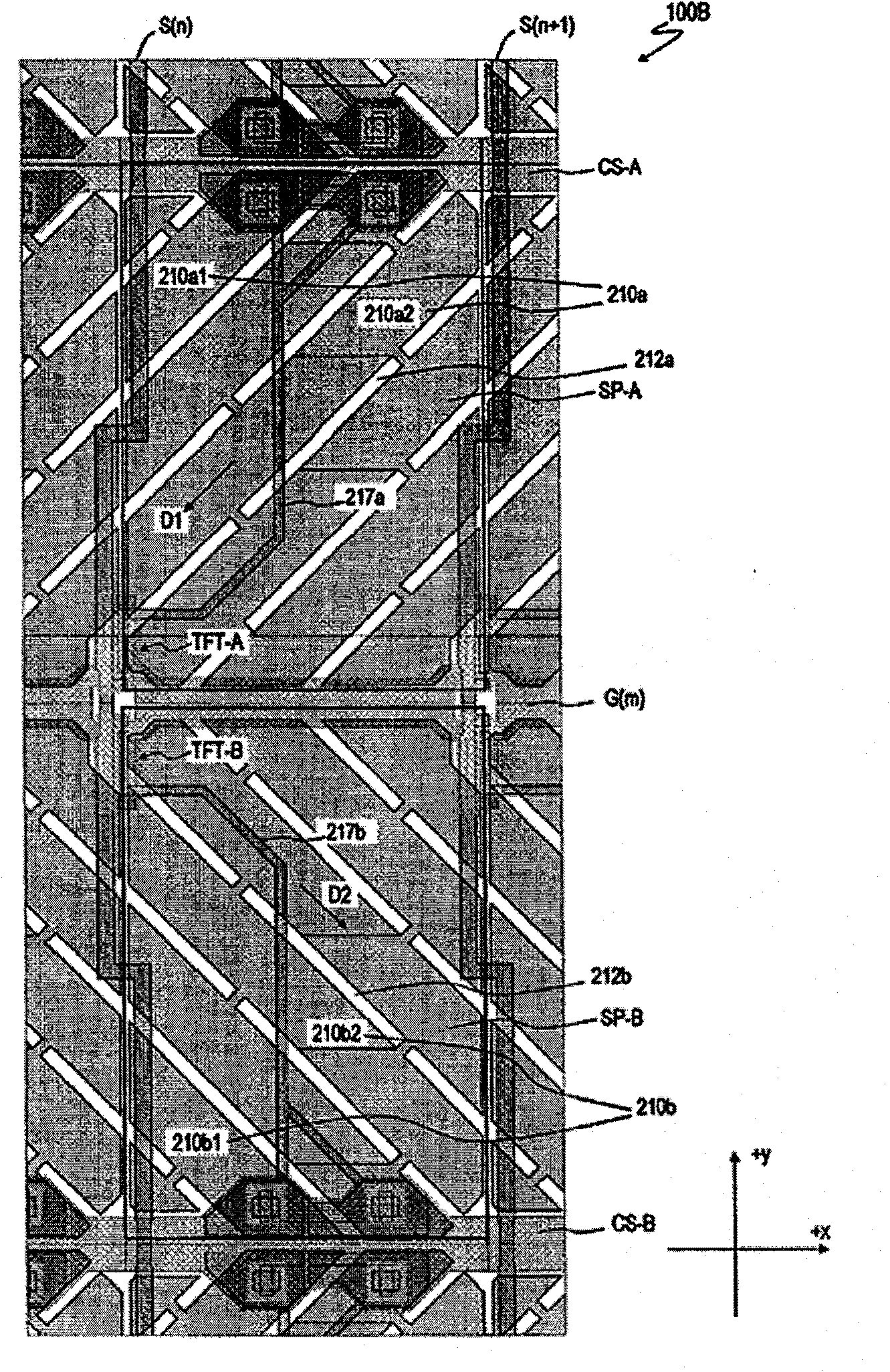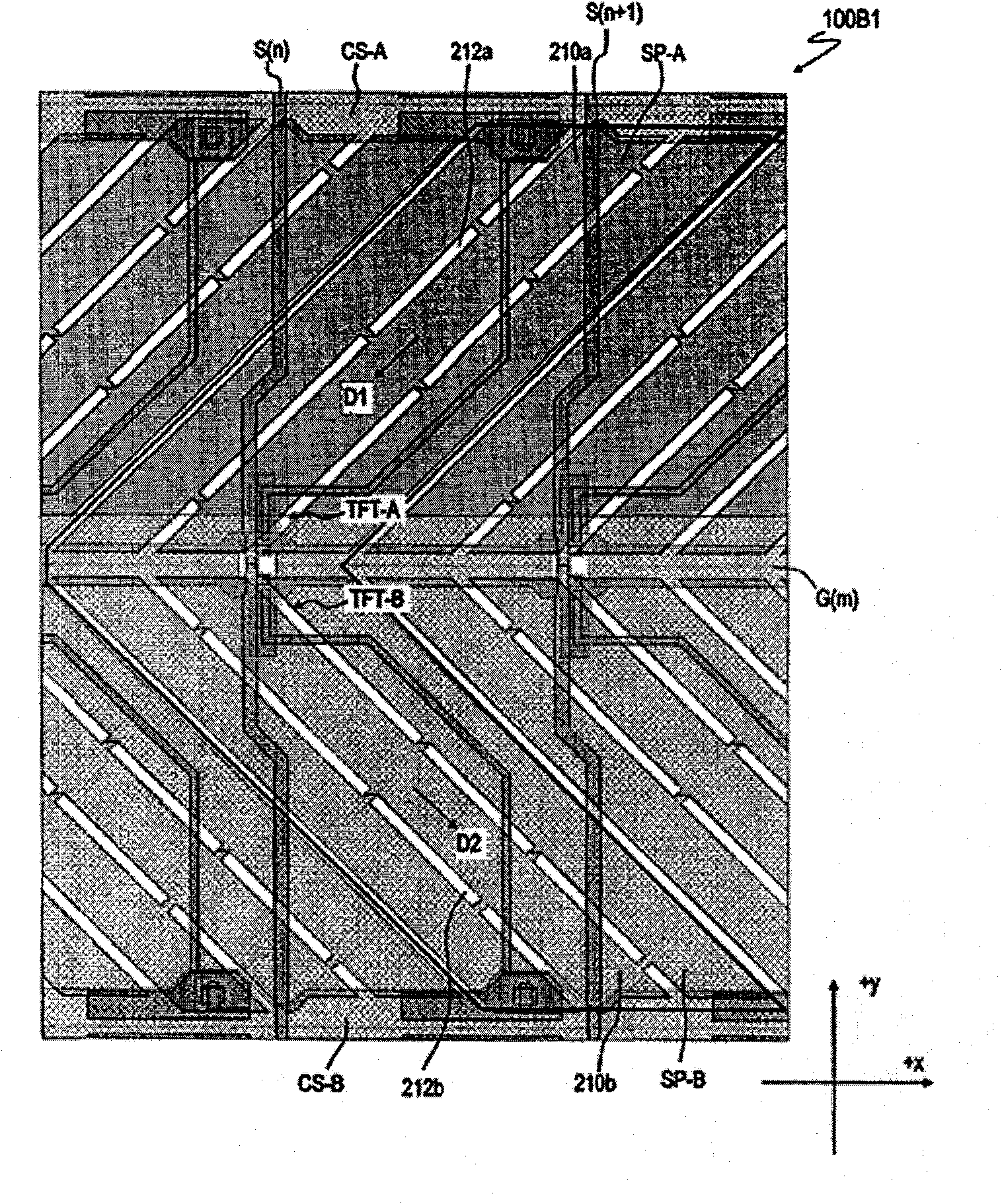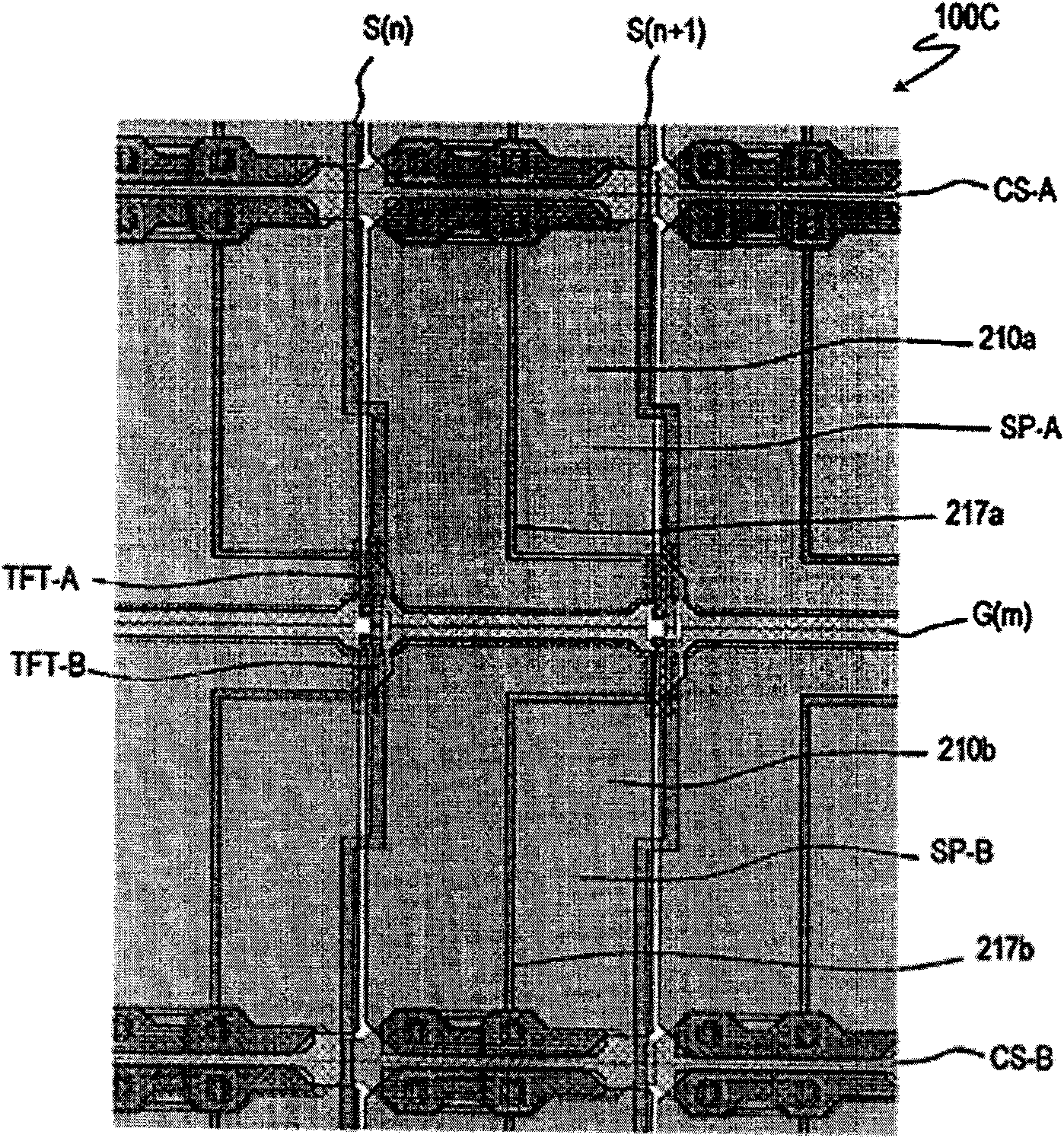Liquid crystal display device
A liquid crystal display device and liquid crystal technology, which are applied in static indicators, instruments, nonlinear optics, etc., can solve the problems of suppressing the reduction of viewing angle characteristics, and achieve the effect of good viewing angle characteristics and suppressing the reduction of transmittance.
- Summary
- Abstract
- Description
- Claims
- Application Information
AI Technical Summary
Problems solved by technology
Method used
Image
Examples
Embodiment approach 1
[0078] Hereinafter, a first embodiment of the liquid crystal display device of the present invention will be described with reference to the drawings.
[0079] figure 1 It is a schematic diagram showing the liquid crystal display device 100A of the present embodiment. The liquid crystal display device 100A includes an active matrix substrate 200 , an opposing substrate 300 , and a liquid crystal layer 400 sandwiched between the active matrix substrate 200 and the opposing substrate 300 . The active matrix substrate 200 has pixel electrodes 210 supported on an insulating substrate 202 and an alignment film (first alignment film) 220 covering the pixel electrodes 210 . In addition, the counter substrate 300 has a counter electrode 310 supported on a transparent insulating substrate 302 , and an alignment film (second alignment film) 320 provided on the counter electrode 310 . The liquid crystal layer 400 is sandwiched between the alignment film 220 of the active matrix substr...
Embodiment approach 2
[0121] Hereinafter, a second embodiment of the liquid crystal display device of the present invention will be described.
[0122] Figure 10 A schematic diagram of a liquid crystal display device 100B of this embodiment is shown. The liquid crystal display device 100B differs from the liquid crystal display device 100A in the following points: the liquid crystal display device 100B is an MVA mode liquid crystal display device using ribs and / or slits on sub-pixel electrodes and / or opposing electrodes as alignment limiting units. In addition, the schematic cross-sectional view and equivalent circuit diagram of the liquid crystal display device 100B are the same as those in figure 1 with figure 2The illustrated liquid crystal display device 100A is the same, and repeated description is omitted. Furthermore, in the liquid crystal display device 100B, figure 1 The illustrated alignment films 220, 320 are vertical alignment films.
[0123] Figure 10 A schematic plan view o...
Embodiment approach 3
[0142] Hereinafter, a third embodiment of the liquid crystal display device of the present invention will be described.
[0143] Figure 13A schematic diagram of a liquid crystal display device 100C of this embodiment is shown in . The liquid crystal display device 100C differs from the liquid crystal display devices 100A and 100B in the VA mode in that it is an OCB mode liquid crystal display device. The polarizing axes of the polarizers in the liquid crystal display devices 100A and 100B are parallel to the x-axis and the y-axis, while in the liquid crystal display device 100C, the polarizing axes of the polarizing plates cross the x-axis and the y-axis (typically, at 45°). way to set. In addition, the liquid crystal display devices 100A and 100B are normally black, and the liquid crystal display device 100C is normally white. The alignment regulating means in the liquid crystal display device 100C is an alignment film similarly to the liquid crystal display device 100A. ...
PUM
 Login to View More
Login to View More Abstract
Description
Claims
Application Information
 Login to View More
Login to View More - R&D
- Intellectual Property
- Life Sciences
- Materials
- Tech Scout
- Unparalleled Data Quality
- Higher Quality Content
- 60% Fewer Hallucinations
Browse by: Latest US Patents, China's latest patents, Technical Efficacy Thesaurus, Application Domain, Technology Topic, Popular Technical Reports.
© 2025 PatSnap. All rights reserved.Legal|Privacy policy|Modern Slavery Act Transparency Statement|Sitemap|About US| Contact US: help@patsnap.com



